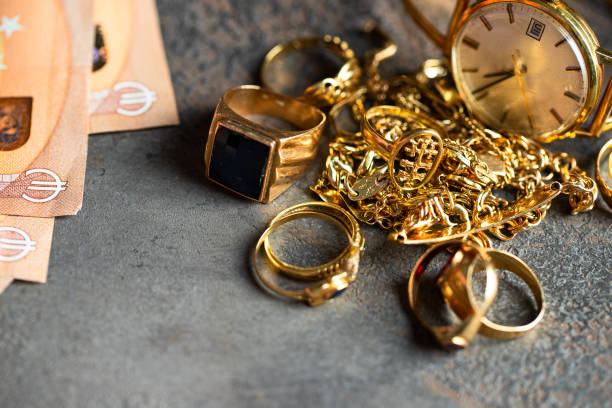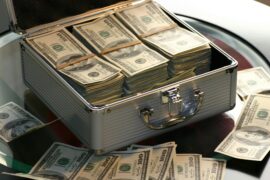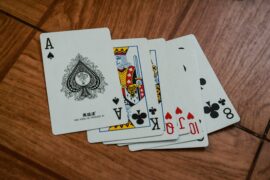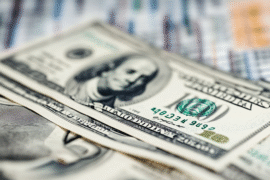This article may contain references to products or services from one or more of our advertisers or partners. We may receive compensation when you click on links to those products or services. Nonetheless, our opinions are our own.
Key Highlights
- With counterfeit gold on the rise, it’s crucial to verify authenticity.
- Several at-home tests can help determine gold purity.
- Simple methods like visual inspection, magnet tests, density checks, and vinegar tests offer helpful insights.
- These tests have limitations; a professional jeweler provides the most accurate results.
- Protecting the value of your gold requires awareness, caution, and expert validation.
Introduction
Gold has been a symbol of wealth and security for centuries, but with the increasing presence of counterfeit products, knowing how to identify real gold is more important than ever. Whether you’re a collector, an investor, or simply checking your jewelry’s authenticity, understanding the difference between real and fake gold can prevent costly mistakes. This guide provides practical and easy-to-follow tests to help determine if your gold is genuine.
Understanding Gold Authenticity
Gold purity is measured using the karat system. Pure gold is 24 karats (24K), but because it is soft and malleable, it is often alloyed with other metals for durability. The most common gold purities include 18K, 14K, and 10K, with lower karat numbers indicating a higher percentage of other metals in the mix.
Why It’s Important to Identify Real Gold
Distinguishing real gold from fake gold is essential for both financial and personal reasons. Authentic gold jewelry and investment pieces hold significant value beyond aesthetics. With high-quality counterfeit gold in circulation, knowing how to verify authenticity can save you from potential losses. If you have doubts, consulting a professional jeweler is the best way to confirm authenticity.
A Brief History of Gold’s Value
Gold has been treasured by civilizations for thousands of years. Ancient Egyptians crafted intricate gold jewelry and burial masks, while the Romans minted gold coins for trade. Its resistance to tarnish, rarity, and luster made it a preferred medium for currency, religious artifacts, and luxury items. Today, gold remains a safe-haven investment, widely used in industries like electronics and aerospace, in addition to its role in jewelry and finance.
Preparing for Your At-Home Gold Tests
Before testing your gold, ensure you have the right materials and take safety precautions, especially for tests involving chemicals.
What You Will Need
- Magnet Test: A strong neodymium magnet (a refrigerator magnet may be too weak).
- Ceramic Plate Test: An unglazed ceramic plate (a glazed plate can alter results).
- Water Test: A bowl of water to check gold’s density.
- Vinegar Test: white vinegar for reactivity testing.
- Nitric Acid Test: A gold testing kit for advanced testing (use with caution).
Safety Precautions
- If using nitric acid, work in a well-ventilated area and wear protective gloves and goggles.
- Keep chemicals away from children and pets.
- Handle gold pieces carefully to avoid unnecessary damage.
Step-by-Step Guide to Testing Gold at Home
Step 1: The Visual Inspection Test
The first step in assessing gold authenticity is a close visual examination.
- Look for hallmarks, usually found on the inside of rings, necklace clasps, or the back of coins.
- Common markings include 10K, 14K, 18K, or 24K. Three-digit numbers like 585 (14K) or 750 (18K) also indicate purity.
- Be aware that counterfeit pieces may have fake hallmarks. Older gold items might not have markings, making further testing necessary.
Step 2: The Magnet Test
Gold is not magnetic, so this test can quickly detect fake pieces.
- Hold a strong magnet near your gold item. If it sticks, it likely contains non-gold metals.
- Keep in mind that some counterfeit gold is made with non-magnetic metals, and gold-plated items can deceive this test.
Step 3: The Water Test
Gold is dense and should sink immediately when placed in water.
- Drop your gold item into a bowl of water.
- Real gold will sink instantly, while fake or impure gold might float or sink slowly.
- Note that some fake alloys have similar density to gold, so this test alone is not conclusive.
Step 4: The Acid Test
The acid test provides a strong indication of gold purity but requires caution.
- Scratch a small, inconspicuous area on the gold piece.
- Apply a drop of nitric acid from a testing kit.
- Real gold will not react, while fake gold may turn green or dissolve.
- Always follow safety guidelines when handling nitric acid.
Step 5: The Hallmark Test
Checking for hallmarks is one of the most reliable methods of identifying gold.
- Authentic gold jewelry will have a hallmark indicating purity (e.g., 24K, 18K, 14K).
- Look for a manufacturer’s logo or additional certification marks.
- Counterfeit gold may have inaccurate or misleading hallmarks, so verification is key.
Conclusion
Being able to differentiate real gold from fake gold is valuable knowledge for both personal and investment purposes. The tests outlined in this guide provide practical ways to assess authenticity at home. While these methods can help identify gold’s purity, professional testing remains the most reliable option. By staying informed and cautious, you can ensure the authenticity and value of your gold assets.
Frequently Asked Questions
Can real gold stick to a magnet?
No, real gold is not magnetic. If a gold item is attracted to a magnet, it likely contains non-gold metals.
How does real gold react to vinegar?
Real gold does not change color when exposed to vinegar. If your jewelry darkens or tarnishes, it is likely not pure gold.
What are the signs of gold-plated items?
Gold-plated items may show wear over time, revealing a base metal underneath. Look for signs of discoloration, fading, or differences in metal color, especially in areas prone to friction.
Can these tests damage my gold jewelry?
The magnet, water, and vinegar tests do not damage gold. However, the acid and ceramic tests may leave small marks, so use them with caution.
Is it necessary to perform all tests to confirm gold’s authenticity?
While performing multiple tests increases accuracy, consulting a professional jeweler is the best way to ensure authenticity.

Reviewed and edited by Albert Fang.
See a typo or want to suggest an edit/revision to the content? Use the contact us form to provide feedback.
At FangWallet, we value editorial integrity and open collaboration in curating quality content for readers to enjoy. Much appreciated for the assist.
Did you like our article and find it insightful? We encourage sharing the article link with family and friends to benefit as well - better yet, sharing on social media. Thank you for the support! 🍉
Article Title: How to Tell If Gold Is Real: 5 Easy At-Home Tests
https://fangwallet.com/2025/02/10/how-to-tell-if-gold-is-real-5-easy-at-home-tests/The FangWallet Promise
FangWallet is an editorially independent resource - founded on breaking down challenging financial concepts for anyone to understand since 2014. While we adhere to editorial integrity, note that this post may contain references to products from our partners.
The FangWallet promise is always to have your best interest in mind and be transparent and honest about the financial picture.
Become an Insider

Subscribe to get a free daily budget planner printable to help get your money on track!
Make passive money the right way. No spam.
Editorial Disclaimer: The editorial content on this page is not provided by any of the companies mentioned. The opinions expressed here are the author's alone.
The content of this website is for informational purposes only and does not represent investment advice, or an offer or solicitation to buy or sell any security, investment, or product. Investors are encouraged to do their own due diligence, and, if necessary, consult professional advising before making any investment decisions. Investing involves a high degree of risk, and financial losses may occur including the potential loss of principal.
Source Citation References:
+ Inspo












































